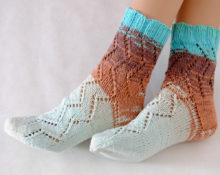Trekking socks are an integral part of equipment for lovers of outdoor activities and hiking. They play an important role in the comfort, protection and support of the feet during long walks and trekking adventures. Choosing the right material for trekking socks is key to ensuring comfort. It also prevents chafing and protects against moisture while hiking. In this article, we'll look at the best materials and give tips on choosing the best trekking socks for your adventures.

Wool and merino wool
Wool socks, including merino wool, are some of the most popular materials for trekking socks. Wool has excellent insulating properties that keep feet warm in cold conditions. They also have good moisture wicking properties. And it helps prevent the formation of sweat and moisture on the feet.Merino wool has a particularly soft and comfortable texture. It also does not cause itching and has natural antibacterial properties, preventing the appearance of unpleasant odors.
Synthetic materials
Synthetic materials are widely used in trekking socks due to their durable and functional properties. Here are some of the popular synthetic materials used in trekking socks:
- Polyester is one of the most common synthetic materials used in trekking socks. It has high strength, abrasion resistance and quick-drying properties. Polyester also provides good ventilation and wicks moisture away from your feet, preventing unpleasant odors.
- Nylon is also widely used in trekking socks due to its strength and durability. It has excellent moisture-wicking properties, keeping your feet dry and comfortable during active trekking adventures.
- Elastane, or spandex, is added to trekking socks to provide elasticity and a good fit on the foot. It allows the socks to stretch and regain their shape, providing a perfect fit and preventing the socks from slipping or curling.
- Polypropylene is lightweight, has good breathability and excellent moisture-wicking properties. It helps keep your feet dry and comfortable while trekking and prevents blisters and chafing.
- Coolmax is a special type of polyester designed specifically to create moisture-wicking and breathable fabrics. It has a high ability to wick moisture away from the skin, accelerating evaporation and keeping feet dry and comfortable.
Mix of materials
Many trekking socks combine different materials in their construction to achieve optimal performance. For example, a combination of wool and synthetic fibers can provide a good combination of insulation, moisture management and durability. This creates socks that effectively control moisture, provide comfort and durability while trekking.

Additional factors for choosing socks
In addition to the choice of material, it is also important to pay attention to additional factors when choosing trekking socks:
- Look for socks with reinforced areas for cushioning and support. This will help reduce the risk of injury and provide additional comfort while walking.
- Socks should have a snug fit, but not be too tight. They should fit the foot well and not slip inside the shoe to prevent chafing and the formation of calluses.
- Choose your sock height based on your conditions and preferences. Some people prefer low socks for better ventilation, while others prefer high socks for added protection and shin support.
Conclusion
Choosing the right material for trekking socks is an important aspect when choosing outdoor gear. Wool socks, synthetics, and blends offer varying combinations of insulation, moisture wicking, and durability. Consider your adventure, weather conditions, and personal preferences when choosing the best trekking socks. Remember that comfort and foot protection should be a priority when choosing socks for outdoor activities.


 0
0





